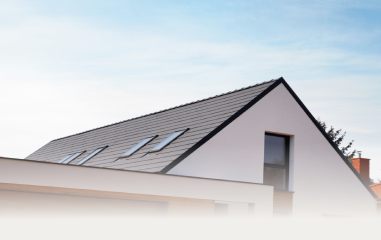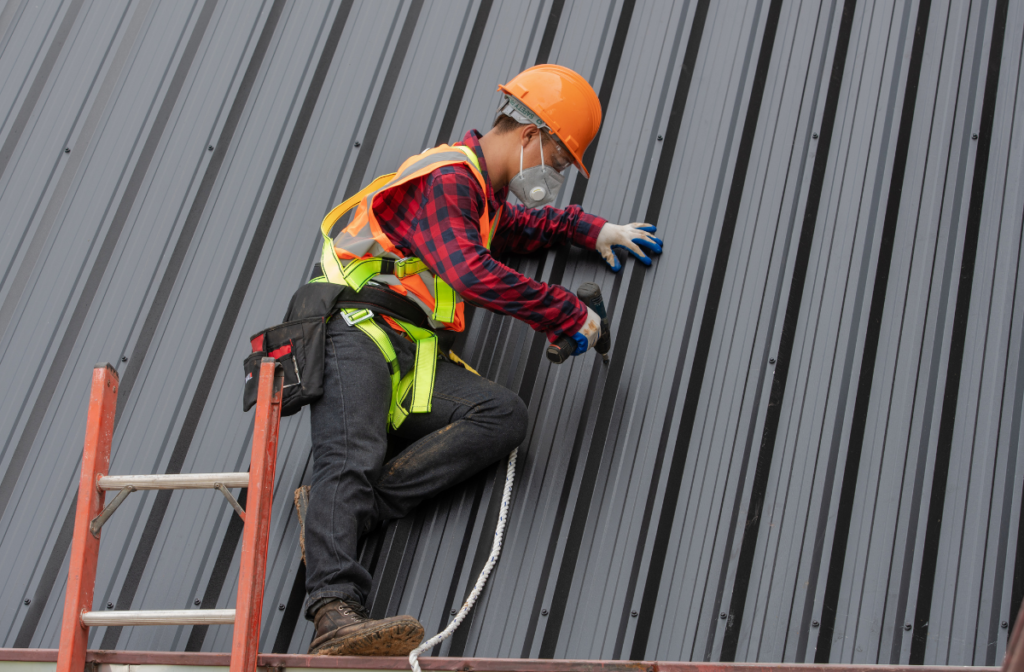Unfortunately, roof damage is common. Whether it’s from severe weather, old age, or just wear and tear, roof damage can lead to significant expenses for homeowners. That’s where roof insurance comes in – it helps protect you financially when unexpected damage occurs.
But what kind of room damage is covered by insurance?
And are there certain types of room damage that are not covered by insurance?
In this guide, we’ll walk you through everything you need to know.
Table of Contents
Types of Roof Damage Covered By Insurance

Roof damage comes in many shapes and forms, and roof insurance covers some of those forms of damage. Here are the types of roof damage covered by insurance:
Storm Damage
Severe storms, such as hurricanes, tornadoes, and hailstorms, can cause significant damage to roofs. This damage is usually covered by insurance policies that include coverage for storm damage. Make sure you check your insurance policy closely to determine exactly what types of storm damage it covers.
Fire Damage
Fires can quickly spread to roofs and cause extensive damage. Fortunately, most homeowner’s insurance policies cover fire damage, including roof repair or replacement. Again, check your policy to determine the full extent of the coverage.
Vandalism
If someone intentionally damages your roof, it may be covered under your homeowner’s insurance policy. Make sure to file a police report and contact your insurance provider immediately if you experience vandalism to your roof.
Falling Objects
If a tree branch or other debris falls onto your roof and causes damage, it may be covered under your insurance policy. However, keep in mind that it may not be covered if the debris was already damaged or rotting.
Dealing with roof damage? We can help. Give us a call today
Types of Roof Damage Not Covered By Insurance

While roof insurance covers a variety of types of damage, there are also certain types of damage that are typically not covered by insurance. These include:
Normal Wear and Tear
Roofs have a limited lifespan and will eventually need to be replaced due to normal wear and tear. Unfortunately, this type of roof damage is usually not covered by insurance.
Negligence or Lack of Maintenance
Insurance companies will not cover damage that could have been prevented with proper maintenance. This includes water leaks that were caused by poor maintenance. It is important to regularly inspect your roof and make repairs as needed to prevent larger issues down the road.
Flood Damage
Flood damage, whether from a natural disaster or plumbing issue, is typically not covered by standard homeowner’s insurance policies. Flood insurance must be purchased separately if you live in a flood-prone area.
Earthquake Damage
Similar to flood damage, earthquake damage is not typically included in standard homeowner’s insurance policies and must be purchased separately if you live in an earthquake-prone area.
Cosmetic Damage
Insurance companies will not cover damage that is considered purely cosmetic, such as small dents or scratches on the roof. While these may be unsightly, they do not affect the structural integrity of the roof.
Need a roof inspection? We would love to help you out. Give us a call today
Other Factors to Consider

In addition to the types of roof damage covered and not covered by insurance, there are a few other factors to keep in mind when it comes to filing a claim for roof damage.
Deductible
Like with any insurance claim, you will need to pay a deductible before your coverage kicks in. Make sure you know what your deductible is and if it is worth making a claim for smaller damages. Many insurance companies have higher deductibles for named storms.
Age of Roof
Insurance companies may take into account the age of your roof when determining coverage for damage. If your roof is older and has not been properly maintained, the insurance company may deny coverage.
Insurance Provider
Different insurance providers may have different policies and coverage options when it comes to roof damage. It is important to thoroughly research and compare different providers before choosing one for your homeowner’s insurance.
What To Do If You Have Roof Damage

If your roof is damaged, there are a few steps you should follow to ensure that, if at all possible, you can have insurance pay for a roof replacement.
Step 1: Document The Damage
Take pictures and videos of the damage to your roof. This will serve as evidence for your insurance claim. Make sure to capture the extent of the damage and any potential causes, such as a fallen tree or severe weather.
Step 2: Contact A Reputable Roofing Contractor
Before you call your insurance company, call a reputable roofing contractor to come and assess the damage. They can help advocate for you during the claims process.
At M&M Roofing, we provide free roof damage inspections. We have more than. 40 years of experience helping people deal with roof damage and we know what it takes to get insurance companies to cover the cost of repairs or replacements.
Call us today for a free roof storm damage inspection
Step 3: File a Claim
Contact your insurance provider as soon as possible to file a claim for roof damage. Make sure to have all the necessary information and documentation, such as your policy number and evidence of the damage, ready when making the call.
Step 4: Follow Up
It is important to follow up with your insurance company regularly to ensure that your claim is being processed in a timely manner. If there are any discrepancies or issues, address them promptly with your insurance provider.
Step 5: Be Prepared For An Adjuster’s Visit
Your insurance company will most likely send an adjuster to assess the damage to your roof. Make sure to have your contractor present during this visit so they can point out any potential issues and make sure all damages are included in the claim.
Step 6: Review Your Policy Coverage
Review your insurance policy carefully to understand what is covered in terms of roof damage. Some policies may have exclusions or limitations, so it is important to know exactly what you are entitled to.
Step 7: Keep Records
Keep detailed records of all communication with your insurance company, including phone calls, emails, and letters. Also keep track of any expenses related to dealing with the damage, such as temporary repairs or accommodations.
Step 8: Repair Your Roof
Once your claim has been approved, it is important to repair your roof as soon as possible. Delaying repairs can lead to further damage and may affect your coverage.
Additional Tips for Dealing with Roof Damage

- Regularly inspect your roof for any signs of damage, such as missing or damaged shingles, leaks, or sagging areas.
- Keep trees trimmed and away from the roof to prevent potential damage from falling branches.
- Have your roof professionally inspected every few years to catch any issues early on.
- Make sure to have a reputable and experienced roofing contractor handle any repairs or replacements. Don’t shy away from getting multiple quotes and doing research before choosing a contractor.
- Consider investing in additional coverage for natural disasters or other potential causes of roof damage that may not be covered in your standard policy.
- Don’t wait to file a claim if you believe your roof has been damaged. The longer you wait, the more difficult it may be to prove the cause and extent of the damage.
Call us today to get a free roof inspection!
Conclusion
Dealing with roof damage can be stressful and overwhelming, but by following these steps and tips, you can ensure that the process is as smooth and successful as possible. Remember to document everything, repair your roof promptly, and stay informed about your insurance coverage. With the right preparation and action, you can minimize the impact of roof damage on your home and finances.


















